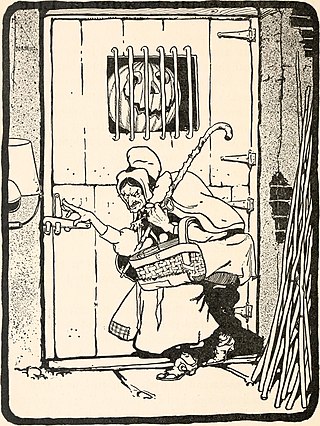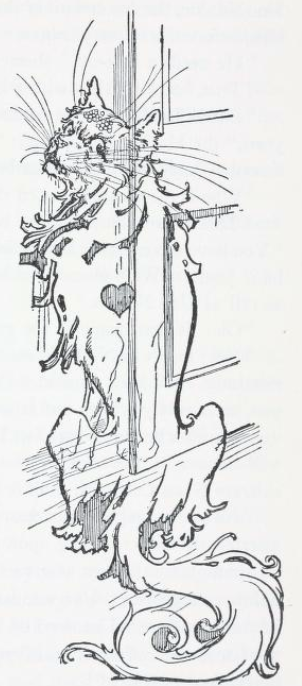
The Patchwork Girl of Oz is the seventh book in L. Frank Baum's Oz series. Characters include the Woozy, Ojo "the Unlucky", Unc Nunkie, Dr. Pipt, Scraps, and others. The novel was first published on July 1, 1913, with illustrations by John R. Neill. In 1914, Baum adapted the book to film through his Oz Film Manufacturing Company. The book was followed by Tik-Tok of Oz (1914).

Dorothy Gale is a fictional character created by the American author L. Frank Baum as the protagonist in many of his Oz novels. She first appears in Baum's classic 1900 children's novel The Wonderful Wizard of Oz and reappears in most of its sequels. She is also the main character in various adaptations, notably the 1939 film adaptation of the novel, The Wizard of Oz.

Oscar Zoroaster Phadrig Isaac Norman Henkle Emmannuel Ambroise Diggs, better known as the "Wizard of Oz" and, during his reign, as "Oz the Great and Terrible" or the "Great and Powerful Oz", is a fictional character in the Land of Oz created by American author L. Frank Baum. The character was further popularized by a stage play and several films, including the classic 1939 film and the 2013 prequel adaptation.

Princess Ozma is a fictional character from the Land of Oz, created by American author L. Frank Baum. She appears for the first time in the second Oz book, The Marvelous Land of Oz (1904), and in every Oz book thereafter.

Glinda is a fictional character created by L. Frank Baum for his Oz novels. She first appears in Baum's 1900 children's classic The Wonderful Wizard of Oz, and is the most powerful sorceress in the Land of Oz, ruler of the Quadling Country South of the Emerald City, and protector of Princess Ozma.

Nick Chopper, the Tin Woodman, is a character in the fictional Land of Oz created by American author L. Frank Baum. He first appeared in his 1900 book The Wonderful Wizard of Oz and reappeared in many other subsequent Oz books in the series. In late 19th-century America, men made out of various tin pieces were used in advertising and political cartoons. Baum, who was editing a magazine on decorating shop windows when he wrote The Wonderful Wizard of Oz, was inspired to create the Tin Woodman by a figure he had built out of metal parts for a shop display.

The Land of Oz is a magical country introduced in the 1900 children's novel The Wonderful Wizard of Oz written by L. Frank Baum and illustrated by W. W. Denslow.
The Wicked Witch of the West, a fictional character in the classic children's novel The Wonderful Wizard of Oz (1900) by the American author L. Frank Baum, is the evil ruler of the Winkie Country, the western region in the Land of Oz. She is inadvertently killed by the child Dorothy Gale. In Baum's subsequent Oz novels, the Wicked Witch of the West is referred to occasionally.

The Wicked Witch of the East is a fictional character created by American author L. Frank Baum. She is a crucial character but appears only briefly in Baum's classic children's series of Oz novels, most notably The Wonderful Wizard of Oz (1900).

The Good Witch of the North, sometimes named Locasta or Tattypoo, is a fictional character in the Land of Oz, created by American author L. Frank Baum. She is the elderly and mild-mannered Ruler of the Gillikin Country. Her only significant appearance in Baum's work is in Chapter 2 of The Wonderful Wizard of Oz (1900), in which she introduces Dorothy Gale to Oz and sends her to meet the Wizard, after placing a protective kiss on her forehead. She makes a brief cameo appearance at Princess Ozma's birthday party in The Road to Oz (1909), but is otherwise only mentioned elsewhere in the series.

Mombi is a fictional character in L. Frank Baum's classic children's series of Oz Books. She is the most significant antagonist in the second Oz book The Marvelous Land of Oz (1904), and is alluded to in other works. Mombi plays a very important role in the fictional history of Oz.
The Shaggy Man is a character in the Oz books by L. Frank Baum. He first appeared in the book The Road to Oz in 1909.

General Jinjur is an antagonist in the 1904 novel The Marvelous Land of Oz. She is a character in the Oz books by L. Frank Baum and his successors.
Aunt Em is a fictional character from the Oz books. She is the wife of Uncle Henry and the aunt of Dorothy Gale, who lives together with them on a farm in Kansas. In The Wonderful Wizard of Oz, she is described as having been a "young, pretty wife" when she arrived at Uncle Henry's farm, but having been "grayed" by her life there, implying that she appears older than her years. Baum writes that when Dorothy came to live with her, Em would "scream and press her hand upon her heart" when startled by Dorothy's laughter, and she appears emotionally distant to her at the beginning of the story. However, after Dorothy is restored to her at the end of the book, her true nature is seen: she cries out, "My darling child!" and covers her with kisses.

The Patchwork Girl of Oz (1914) is a silent film made by L. Frank Baum's The Oz Film Manufacturing Company. It was based on the 1913 book The Patchwork Girl of Oz.

Bungle, the Glass Cat is a character in the Oz books of L. Frank Baum.

Jellia Jamb is a fictional character from the classic children's series of Oz books by American author L. Frank Baum. She is first introduced in The Wonderful Wizard of Oz (1900), as the head maid who works in the royal palace of the Emerald City which is the imperial capital of the Land of Oz. In later books, Jellia eventually becomes Princess Ozma's favorite servant out of the Emerald City's staff administration. She is also the protagonist of Ruth Plumly Thompson's 1939 novel Ozoplaning with the Wizard of Oz. Her name is a pun on the phrase "Jelly or jam?"
The Soldier with the Green Whiskers is a character from the fictional Land of Oz who appears in the classic children's series of Oz books by American author L. Frank Baum and his successors. He is introduced in The Wonderful Wizard of Oz (1900). His name is Omby Amby, but this was so obliquely stated that he also became known briefly as Wantowin Battles.















